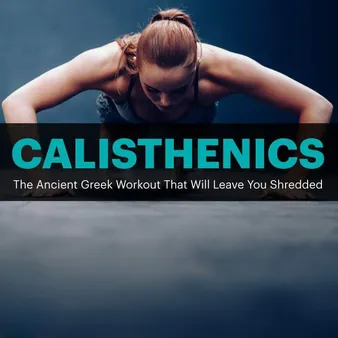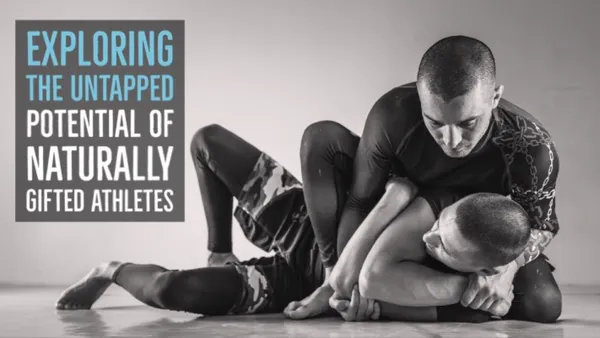Table of Contents
Welcome to kizworld, where we explore the world of fitness and wellness. Today, we're going to investigate into the fascinating history of calisthenics, a practice that has been around for thousands of years. But have you ever wondered who invented calisthenics? The answer might surprise you. As we explore the origins of calisthenics, we'll take you on a progression through ancient Greece, meet key figures who shaped its development, and uncover how it has evolved over time. So, let's get started on this exciting exploration and uncover the secrets of calisthenics!
Who Invented Calisthenics? Uncovering The Ancient Origins Of Bodyweight Training
What is Calisthenics and Its History
Calisthenics is a form of exercise that uses body weight as resistance to develop strength, flexibility, and coordination. The word "calisthenics" comes from the ancient Greek words "kalos," meaning beauty, and "sthenos," meaning strength. This practice has been around for thousands of years, with its roots dating back to ancient Greece.
The Ancient Roots of Calisthenics
In ancient Greece, calisthenics was used as a way to prepare for battle and improve overall physical fitness. The Spartans, in particular, were known for their rigorous training regimens, which included bodyweight exercises like push-ups, squats, and lunges. These exercises helped them build the strength and endurance needed for combat.
Ancient Greek City-State | Contribution to Calisthenics |
|---|---|
Sparta | Developed rigorous training regimens that included bodyweight exercises like push-ups, squats, and lunges. |
Athens | Emphasized the importance of physical fitness and athleticism in everyday life. |
The Evolution of Calisthenics Over Time
Over time, calisthenics has evolved to include a wide range of exercises and training methods. In the 19th century, German gymnastics educator Friedrich Ludwig Jahn developed a system of calisthenics that emphasized strength, flexibility, and coordination. This system was later refined by Dioclesian Lewis in 1860.
- Friedrich Ludwig Jahn: Developed a system of calisthenics that emphasized strength,flexibility,and coordination.
- Dioclesian Lewis: Refined Jahn's systemand created his own methodof gymnastics.
- Spartan Warriors: Used calisthenicexercisesto prepare for battle.Sources:Wikipedia - Calisthenics,Britannica - Calisthenics
What is Calisthenics and Its History
The Ancient Roots of Calisthenics: Uncovering the Origins
Calisthenics in Ancient Greece
In ancient Greece, calisthenics was a way of life. The Greeks believed that a strong body and mind were essential for overall well-being. They developed various exercises that used body weight as resistance to build strength, flexibility, and coordination. These exercises were often performed outdoors, using natural environments like hills, rocks, and trees as equipment.
Ancient Greek City-State | Contribution to Calisthenics |
|---|---|
Sparta | Developed rigorous training regimens that included bodyweight exercises like push-ups, squats, and lunges. |
Athens | Emphasized the importance of physical fitness and athleticism in everyday life. |
The Role of Calisthenics in Spartan Warrior Training
In ancient Sparta, calisthenics played a crucial role in warrior training. The Spartans believed that physical fitness was essential for success on the battlefield. They developed a system of exercise that included bodyweight exercises like push-ups, squats, and lunges. These exercises helped build strength, endurance, and agility – all essential qualities for a warrior.
- Push-ups: Built chest and arm strength.
- Squats: Developed leg strength and endurance.
- Lunges: Improved balance and agility.
Sources:,, Calisthenic Magazine - Origin and History of Calisthenic
The Ancient Roots of Calisthenics: Uncovering the Origins
Who Invented Calisthenics? Exploring the Key Figures and Civilizations
The Role of Ancient Greece in Shaping Calisthenics
Ancient Greece played a significant role in shaping calisthenics. The Greeks believed that physical fitness was essential for overall well-being, and they developed various exercises that used body weight as resistance to build strength, flexibility, and coordination. These exercises were often performed outdoors, using natural environments like hills, rocks, and trees as equipment.
Ancient Greek City-State | Contribution to Calisthenics |
|---|---|
Sparta | Developed rigorous training regimens that included bodyweight exercises like push-ups, squats, and lunges. |
Athens | Emphasized the importance of physical fitness and athleticism in everyday life. |
Influential Figures in the Evolution of Calisthenics
While it's difficult to attribute the invention of calisthenics to a single person, there are several key figures who have contributed to its evolution over time. One such figure is Friedrich Ludwig Jahn, a German gymnastics educator who developed a system of calisthenics that emphasized strength, flexibility, and coordination in the 19th century. Another influential figure is Dioclesian Lewis, who refined Jahn's system and created his own method of gymnastics.
- Friedrich Ludwig Jahn: Developed a system of calisthenics that emphasized strength,flexibility,and coordination.
- Dioclesian Lewis: Refined Jahn's systemand created his own methodof gymnastics.
Sources:,,
Who Invented Calisthenics? Exploring the Key Figures and Civilizations
The Evolution of Calisthenics: From Ancient Greece to Modern Times
Calisthenics in the 19th Century: A New Stage of Development
In the 19th century, calisthenics underwent a significant transformation. Friedrich Ludwig Jahn, a German gymnastics educator, developed a system of calisthenics that emphasized strength, flexibility, and coordination. This system was later refined by Dioclesian Lewis, who created his own method of gymnastics.
Influential Figure | Contribution to Calisthenics |
|---|---|
Friedrich Ludwig Jahn | Developed a system of calisthenics that emphasized strength, flexibility, and coordination. |
Dioclesian Lewis | Refined Jahn's system and created his own method of gymnastics. |
Modern Calisthenics: A Global Phenomenon
Today, calisthenics is practiced all over the world. It has evolved into various forms and styles, from traditional bodyweight exercises to modern fusion methods that incorporate elements from dance, yoga, and other disciplines. Despite its evolution, the core principles of calisthenics remain the same – to build strength, flexibility, and coordination using body weight as resistance.
- Traditional Bodyweight Exercises: Push-ups,pull-ups,squats,lunges.
- Modern Fusion Methods: Incorporates elementsfrom dance,yoga,and other disciplines.
Sources:,, Calistenic Magazine - Origin and History of Calistenic
The Evolution of Calisthenics: From Ancient Greece to Modern Times
In conclusion, while there isn't a single inventor of calisthenics, its rich history dates back to ancient Greece, where it was used by Spartan warriors to prepare for battle. From there, it evolved over time, influenced by various civilizations and key figures like Dioclesian Lewis. Today, calisthenics remains a popular form of exercise that promotes strength, endurance, flexibility, and coordination. Whether you're a fitness enthusiast or just starting your progression, understanding the history of calisthenics can deepen your appreciation for this timeless practice.